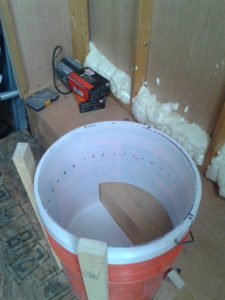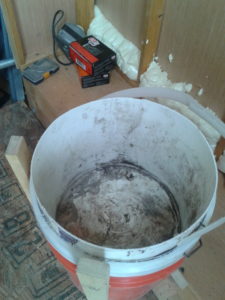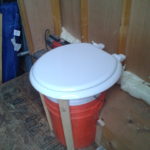One of the challenges of building a Biome that can be self-sustaining is handling wastes. We’re talking about food wastes, garden wastes, and human wastes of feces and urine. Any habitat off of the Earth must be able to not only handle these wastes, but recycle them in a safe and productive manner. That means finding other species that will tackle these and yet contribute other value to the biome.
Traditionally, wastes are buried, burned, chemically treated, or just dumped in a ditch, a creek, or the ocean, depending on the priorities at the moment. We will not have the resources to engage any of these options whether in space, or on the Moon or Mars. It is a massive waste of resources! Not to mention a real threat to health if handled improperly!
There are voracious waste eaters in nature, dung beetles are a somewhat humurous example. Black Soldier Flies (BSF) are a more recent creature to come into the light. The ground beneath our feet harbors mycelium that maintain a network of bacteria that both assists plants in getting the nutrients and minerals they need, but also facilitates the decomposition of things left to rot. Thermophilic bacteria thrive in high temperature compost piles to munch on the decaying plant matter there.
Our Tiny Home is a compact structure that cannot support a compost pile, nor is there square footage to devote to a compost pile for a year. Instead, we will provide a layered home to two species that while directly incompatible, can support rapid decomposition of human, garden, and food wastes.
 This home is a three layer, composting toilet. It will be our toilet, our trash bin, and our compost pile all in one. To accomplish this, we must first provide a way to handle, and eliminate liquid wastes, like urine, from the toilet. For that a funnel attached to a tube will be provided to divert these fluids to the bottom of the toilet bypassing the insects and their work.
This home is a three layer, composting toilet. It will be our toilet, our trash bin, and our compost pile all in one. To accomplish this, we must first provide a way to handle, and eliminate liquid wastes, like urine, from the toilet. For that a funnel attached to a tube will be provided to divert these fluids to the bottom of the toilet bypassing the insects and their work.
As you can see, we are using nested buckets for our layers. The bottom, red bucket is our holding reservoir for the fluids. This reservoir will hold the fluids until they can be diluted with our other grey water and drained into the fish pond.
The next bucket is where we will house Red Wiggler worms. These worms prefer a cooler environment than the Black Soldier Fly (BSF) larvae, also a dryer area. The castings the worms leave provide fertile compost to feed our plants with.
 Finally, our third, top bucket will house the BSF larvae. It is these larvae that break down the bulk of the wastes deposited in the toilet. What the BSF larvae leave behind gets worked down providing food for the Red Wigglers.
Finally, our third, top bucket will house the BSF larvae. It is these larvae that break down the bulk of the wastes deposited in the toilet. What the BSF larvae leave behind gets worked down providing food for the Red Wigglers.
 Next, we top it off with a seat for the human component, and to provide a somewhat cosmeticly appealing view.
Next, we top it off with a seat for the human component, and to provide a somewhat cosmeticly appealing view.
And finally, with the tiny home complete, we add an attractive wood veneer, floor covering, and the garden space behind it.
With the garden space behind the toilet, an opening in the back allows the red worms to spread out into that garden and not be confined just to the toilet.  Similarly, the finishing touch for the BSF will be the installation of a narrow ramp leading to a bin behind the toilet to allow them to get away and reach their adult stage. In the top of the bin, are pieces of cardboard to allow the BSF to lay their eggs for more larvae to fall into the toilet to complete the cycle. So long as there is food, there will be the colony of BSF. Lunch!
Similarly, the finishing touch for the BSF will be the installation of a narrow ramp leading to a bin behind the toilet to allow them to get away and reach their adult stage. In the top of the bin, are pieces of cardboard to allow the BSF to lay their eggs for more larvae to fall into the toilet to complete the cycle. So long as there is food, there will be the colony of BSF. Lunch!